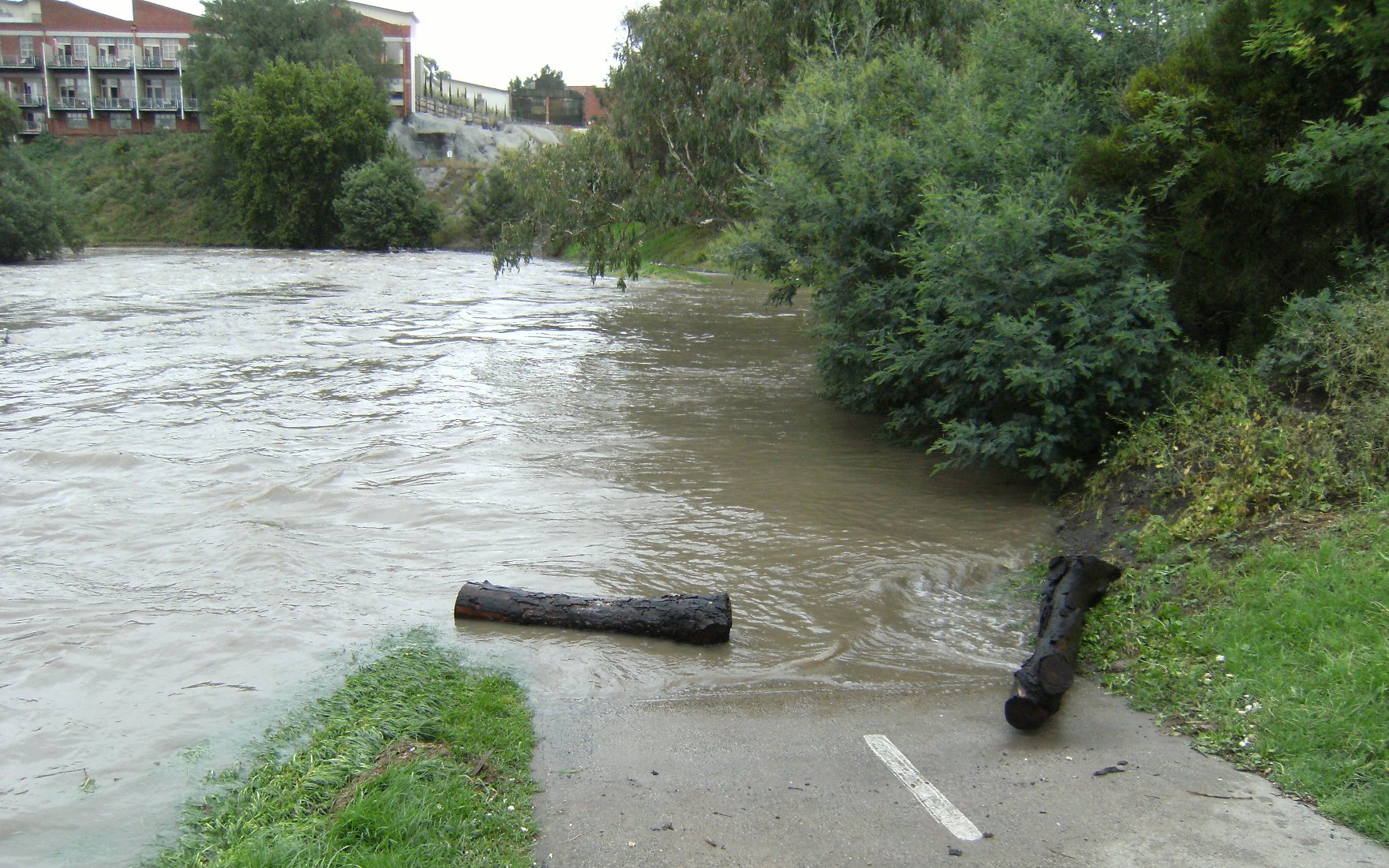Part 2: Deluge
When the rain came, it came hard. In hindsight that shouldn’t have surprised anyone: the Australian environment is not gentle. By the time then-Minister for Agriculture Joe Ludwig announced in March 2012 that federal drought assistance was no longer needed in Bundarra and Eurobodalla – the only areas still listed as being under “exceptional circumstances” – much of the country had already become accustomed to deluge. Since the summer of 2010/11 the rain had fallen, and fallen, and fallen. I moved during that time to a house near Merri Creek in Melbourne’s inner north, and after rain I’d often walk down to the creek and see it in flood. Whole features of the landscape were habitually lost beneath the torrent as rain from the city’s fringes fed through the creek into the Yarra River.
Sometimes the rain came in great storms with thunder that sounded as if the air was an enormous sheet of paper that was being torn in two. Sometimes it fell more gently and steadily, sounding like a great crowd of people rushing through a train station with slippers on their feet. With the rain came an exaggerated fecundity – because that’s what rain means, at first: life. Melbourne’s gardens and parks became overgrown by opportunistic Acanthus; native violets crept across every surface: they filled the hollow walls of my house so that every time I opened a cupboard I’d find a thin tendril there, pale in the dark, reaching for the narrow crack of light.
My neighbours and their two young children began collecting tadpoles, and hatching them in a fishtank in their front garden, and when the rain fell – and only when the rain fell – I could hear the distinctive rasping of Southern Brown Tree Frogs singing into the damp air. Every night slugs and snails emerged in their hundreds from the undergrowth and slithered across my back garden, many finding their way under the door to investigate the laundry and the kitchen at their own stately pace. In the bush animals and plants of all species bred with an exuberance that echoed the almost daily rainfall. Even now, three years after that initial explosion of life, you can still see its effects in the bush of southern and eastern Australia: animals have rarely seemed as numerous as they have these last few years.
The rain fell, and fell, and fell; it didn’t stop.
Then the inevitable happened.
Reservoirs across the country filled, and kept filling, and sometimes even overflowed. The rain fell, and fell, and fell; it didn’t stop. Then the inevitable happened: the exceptionally wet summer of 2010-11 culminated in floods of an unfathomable scale. A third of Victoria was flooded or suffered from storm damage. Elsewhere, astonishingly, it was even worse.
In a week from the 8th January southern Queensland experienced a cascade of floods as one river after another broke its banks. The first to rise was the Balonne River, whose waters left several towns cut off and dependant on air-drops. Two days later flash floods of a scale previously unseen devastated the Lockyer Valley and inundated Toowoomba, a city of 150,000 people. The floods continued through other towns and rural areas over the next few days, washing into thousands of homes, until in the early morning of the thirteenth of January 2011 the Brisbane River brought the floods into the centre of the Brisbane, Queensland’s capital, Australia’s third-largest city.
Events happened almost too quickly to keep up with. Vehicles and property were ripped away by the churning waters. Jetties and boardwalks crashed into bridges. I could fill a page with adjectives and still not adequately describe the damage wrought by the water. Instead I’ll let the introduction to the Queensland Flood Commission’s final report speak for itself:
Thirty-three people died in the 2010/2011 floods; three remain missing. More than 78 per cent of the state (an area bigger than France and Germany combined) was declared a disaster zone; over 2.5 million people were affected. Some 29,000 homes and businesses suffered some form of inundation. The Queensland Reconstruction Authority has estimated that the cost of flooding events will be in excess of $5 billion.
That this was happening in our own country, and that it was happening after so many years of drought, was almost beyond comprehension.
Australians are perhaps better accustomed than the people of other developed nations to dealing with natural disaster: bushfires are not an anomaly here but a seasonal fact of life; it barely raises an eyebrow now that some Australian farmers could receive from the government simultaneous flood relief and drought relief. Perhaps that’s why, after the drought, after the fires, after the floods, we barely seem to speak about them. Is this how we live now, in the aftermath, in a time of plenty – by trying to forget the past?
Click here for Life in a Time of Plenty, Part I.
Part III to be published on Tuesday, 12th December 2013.

